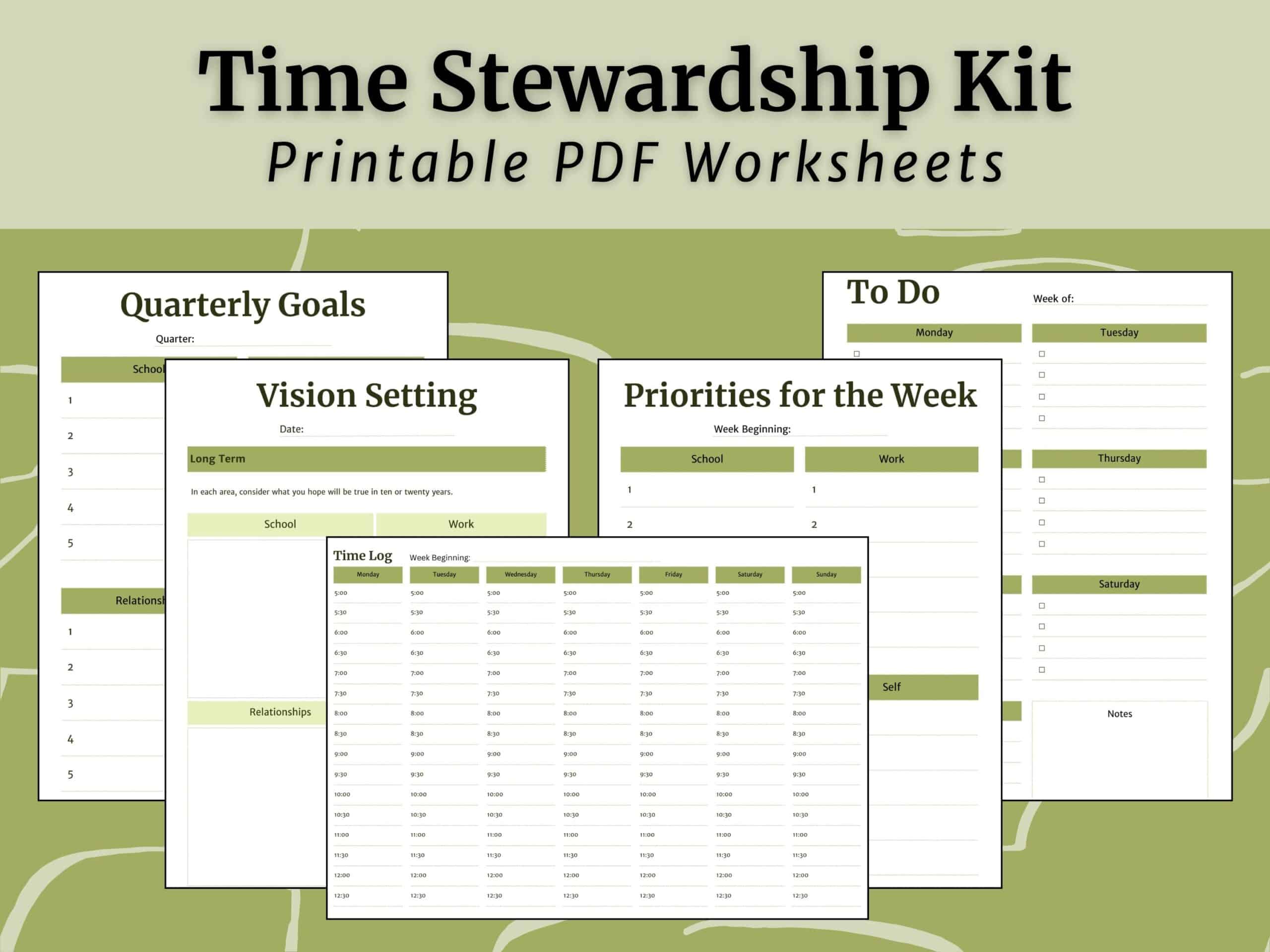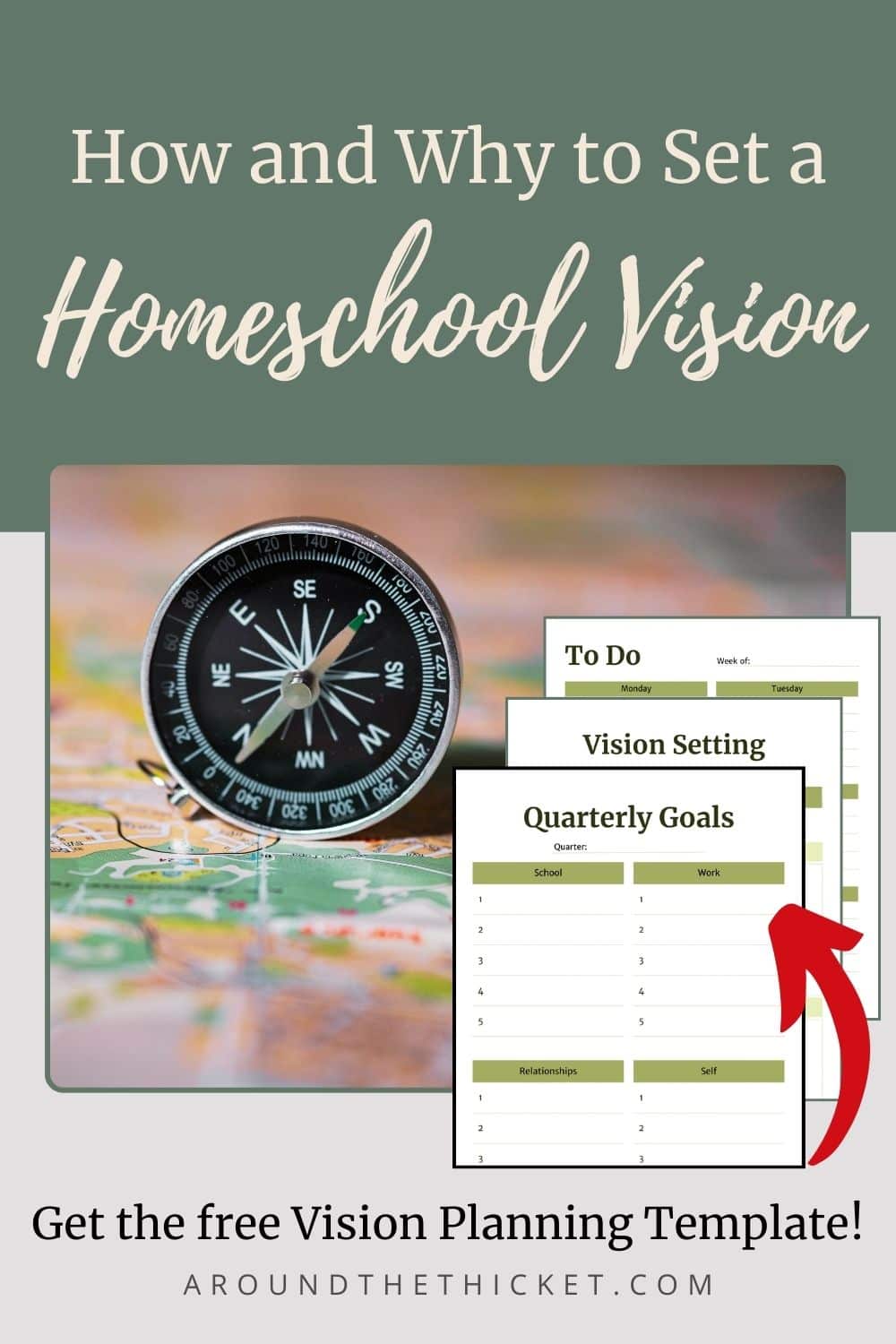Why and How to Set a Homeschool Vision
When my first child was a little baby, I came across a blog post about homeschooling. In a few moments, my mind was seven years in the future: what would it look like to educate my children at home? I delightfully imagined travelling to see family at any time of the year, skipping out on starting school at age four, and snuggling on the sofa with books, poetry, art, and music. That post gave me a vision for what homeschooling could be.
Eleven years on, and I contend that developing a strong vision is one of the most useful, practical activities that any homeschool parent can do. I’m not talking about a list of vague ideals, or a bucket list of trips to take with your kids, but a vision that both gives you direction and compels you to move forward. A vision that is as much about the future as it is about your choices right now, today.
In this post, I’ll share about homeschool vision planning, how I’ve approached it, and how to get the most out of your vision.
What is a homeschool vision?
Charlotte Mason wrote that “Method implies two things––a way to an end, and a step by step progress in that way. Further, the following of a method implies an idea, a mental image, of the end or object to be arrived at. What do you propose that education shall effect in and for your child?” (Home Education)
In this paragraph, written over one hundred years ago, Charlotte Mason shares the purpose of a vision in education. When we set a vision, we are giving definition to that ‘end or object to be arrived at’. We are answering the question, ‘What do you propose that education shall effect in and for your child?’
Without answering this question with reasonable confidence, there are two risks. One is that we are aimless in our efforts. Education doesn’t seem to do much for our children because we don’t know what we’re trying to accomplish in the first place. We operate on intuition and reaction. It’s the ‘throw spaghetti at the wall and see what sticks’ approach.
The other risk is that we go confidently, but misguidedly, in the wrong direction. I think it can be more difficult to discern when this is the case because we are confident. I think of situations like an intense focus on achievement through exams, rigor at all costs. In other words, I imagine attempting to replicate many of the issues inherent in traditional school settings!
Can you give me some examples?
To sum up, a homeschool vision is an articulation of what we want the results of homeschooling to actually be. Personally, I don’t have a nice and tidy five-point homeschool vision. I do know, however, that when my children leave the nest, these are some of the things that I want to be true:
- My children to be self-motivated adults who take initiative for their own learning, growth, and well-being
- My children to have a wide range of interests and an idea of their own specific gifts and skills
- My children to have strong ties to the real world – real people and real places – that balance the huge prevalence and pull of the digital world
- My children to have positive, open, and loving relationships with their siblings and parents
- My children to have taken up personal responsibility for (and enjoyment of) their faith and spiritual growth
These are BIG statements. These are BIG hopes. They are too big to be achieved in one day or even one year. I’ve been slowly working toward this vision for years, and will continue to do so for years to come. In my mind, though, that’s the point of a vision. It’s to give you that big picture outlook so you know how to direct your steps today.
How do you come up with a homeschool vision?
I know that not everyone loves vision planning and goal setting. For some, it’s hard to develop ideas about where you would like to be in ten years when you can hardly imagine what tomorrow will bring. I still think it is worthwhile to articulate some sort of a vision, though, so here are some steps to vision planning that can help.
Think far into the future
You’ll notice from my example that my homeschool vision is oriented around when my children are grown up and have left home. The business of parenting is slowly releasing our children from our care over many years, and so any homeschool vision ought to be set with that in mind. Our children will be adults one day. Think about that day as you contemplate your vision.
Be (a little) vague
I mentioned above that a homeschool vision is not a bucket list. Yes, we might want to visit the Roman forum and climb Mount Kilimanjaro with our children, but that’s we’re not trying to make a checklist here. Instead, we want to establish general truths: what skills, qualities, relationships, knowledge do we hope our children will have? I think a homeschool vision needs to be tough. It should be something that we can work toward even if we encounter serious trials, like illness or financial hardship.
Seek wisdom
One reason I love to read Charlotte Mason’s volumes is that she does such a great job of sharing her vision for what ‘education can effect in our children’. She reminds us that education isn’t about a list of qualifications, but how much our child cares and how many life-giving relationships he or she has.
A homeschool vision should be developed with all the wisdom we can possibly glean from Scripture, great thinkers, our own parents and experience, other home educators who have gone before us. A homeschool vision does not need to be unique.
Narrow it down
When I spend time thinking about my homeschool vision, I typically end up with a long and scattered list. When you’ve spent time thinking, reading, gathering insight, journaling, and discussing, take time to narrow your wandering thoughts into a few key areas. What has caught your attention most? What encapsulates these ideas? This is your homeschool vision.
What do I do with my vision?
To be effective, a homeschool vision should not stay as a list of bullet points on a piece of scrap paper. To go back to the Charlotte Mason quote from earlier, we need an end in mind (our vision) but we also need to make step by step progress toward that end. The purpose of our vision is practical!
Bring your vision into the present
When writing about time management, I shared my process for bringing my vision for the future into the present. To summarize, after developing a long term vision, I take time to consider where I hope to be in the next three years, and then in the next twelve months.
These shorter term goals should be obvious steps toward the big picture vision. For example, if I want my children to have strong ties to the world around them, my shorter term goals would include spending significant time in nature.
I take this even one step further and set goals for the next twelve weeks. That ambition to spend time in nature looks like a goal to take my kids to the beach every other Friday this term. This process brings my big picture vision into my choices for how I spend my time this week.
Be open minded
When we set out on a journey, we usually know where we want to go and how we want to get there. Sometimes, though, we find our way blocked by a road closure. Just because we have a homeschool vision, doesn’t mean we know exactly what we will encounter as we make progress toward that goal.
Whether it’s adjusting our curriculum choices, deciding whether or not to join a co-op, or facing a period of trial (like the illness or financial trouble I mentioned earlier), if our vision is robust, we will see ways to move toward it, even if it’s not the way we hoped or planned.
Review and refresh
Finally, a homeschool vision is most valuable when we keep our eyes set upon it. In other words, if we forget all about it, we will struggle to connect it to our daily lives and we may find ourselves disoriented!
If we set specific goals on a regular basis through the year (quarterly, each semester or term, or a similar cadence), then this is a good time to review your vision. Go back over your hopes. Are you heading in that direction?
Finally, make room to refresh your vision. Every year we (hopefully) get a little bit wiser and the day of launching our children from our homes comes a little closer. It’s good to revise and refine our vision as we go along.
Free Homeschool Vision Planning Template
You can get my printable vision planning template as part of my Time Stewardship Kit when you subscribe to my newsletter below. It’s not just for homeschool, but for work, relationships, and personal growth, too!
Homeschool days fly by. Make the most of them.

My Time Stewardship Kit is a series of worksheets I created to help me stay focused on what matters. If you’d like to build habits to steward your time better, I’ll send you the bundle when you subscribe to my newsletter.
You’ll receive worksheets for: time logging, vision planning, goal setting, and prioritizing.









thank you for the printable.
You are so welcome!